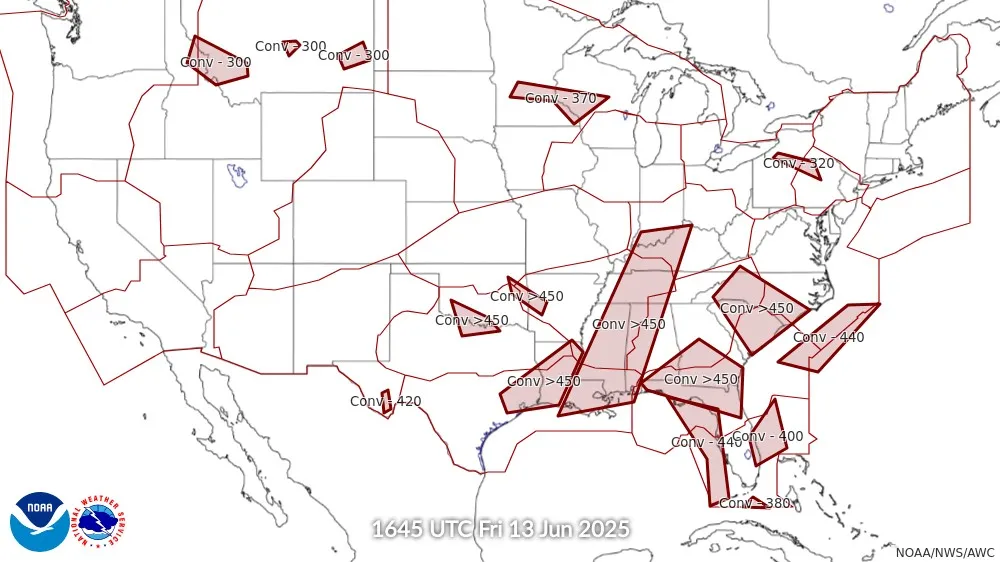When it comes to aviation safety, weather is one of the most significant variables pilots must constantly monitor. Among the many weather advisories that exist, SIGMETs play a crucial role in alerting pilots and air traffic controllers to dangerous weather conditions that can affect the safety of flight operations. Understanding what a SIGMET is in aviation, how it differs from other advisories like AIRMETs, and how to interpret and respond to them is essential for anyone learning to fly.
In this guide, we’ll break down everything you need to know about SIGMETs, why they exist, how they are issued, and how pilots incorporate this information into flight planning and in-flight decision-making.
Understanding SIGMET in Aviation
The term SIGMET stands for Significant Meteorological Information. A SIGMET is a weather advisory that warns pilots of non-convective weather phenomena that are potentially hazardous to all aircraft, regardless of size or experience level. Unlike routine weather updates, SIGMETs alert pilots to serious weather developments that could compromise flight safety.
Issued by meteorological authorities, SIGMETs cover large areas of airspace and are broadcast to all affected aircraft. They are designed to prompt immediate attention and potential route adjustments.
Types of SIGMETs
There are two broad categories of SIGMETs:
- Non-Convective SIGMETs
- Convective SIGMETs
Non-Convective SIGMETs include hazards such as:
- Severe turbulence
- Severe icing
- Volcanic ash
- Dust storms or sandstorms
- Widespread visibility reductions
- Severe mountain wave activity
Convective SIGMETs specifically cover:
- Severe thunderstorms
- Embedded thunderstorms
- Squall lines
- Hail greater than or equal to 3/4 inch
- Tornadoes
Both types are issued when these weather phenomena meet specific intensity or coverage thresholds that create a serious hazard for aircraft.
Why Are SIGMETs Important?
Flying into the conditions described in a SIGMET can result in serious aircraft damage or even accidents. For student pilots and seasoned professionals alike, understanding and respecting SIGMETs is critical.
- Severe Turbulence: Can lead to loss of control or structural damage.
- Severe Icing: Can compromise lift and increase drag, potentially leading to stalls.
- Volcanic Ash: Can cause engine failure and severely damage avionics.
- Dust and Sandstorms: Can reduce visibility to zero, making navigation nearly impossible.
- Thunderstorms and Tornadoes: Combine multiple threats, including turbulence, hail, and wind shear.
Each of these hazards has the potential to create situations that even highly trained pilots may not be able to manage safely.
Read more about aviation safety
How SIGMETs Are Issued
In the United States, SIGMETs are issued by the Aviation Weather Center (AWC) operated by the National Weather Service (NWS). Internationally, different regional meteorological watch offices, operating under ICAO standards, are responsible for issuing SIGMETs.
Issuance Criteria:
- Valid for up to 4 hours.
- Updated or canceled as conditions change.
- Describes the nature of the hazard, its location, altitude, movement, and forecast.
Pilots receive SIGMETs through:
- Pre-flight briefings
- ATIS (Automatic Terminal Information Service)
- ATC broadcasts
- Flight service stations
- Electronic Flight Bags (EFBs) like ForeFlight and Garmin Pilot

Sample SIGMET Format
SIGMETs follow a specific format to ensure clarity. Here is a simplified example:
SIGMET ZULU 1 VALID UNTIL 1200Z
FLIGHT LEVELS 080 TO 180
SEV TURB FCST MOV E 20KT
Breaking it down:
- ZULU 1: Identification label.
- VALID UNTIL 1200Z: Expiration time.
- FLIGHT LEVELS 080 TO 180: Altitudes affected.
- SEV TURB FCST MOV E 20KT: Forecast of severe turbulence moving east at 20 knots.
Understanding this format allows pilots to quickly digest critical information.
SIGMET vs. AIRMET: What Is the Difference?
Both SIGMETs and AIRMETs are aviation weather advisories, but they serve different purposes:
| Feature | SIGMET | AIRMET |
|---|---|---|
| Severity | Severe (significant hazard to all aircraft) | Less severe (affects smaller aircraft, light aircraft more) |
| Type | Severe turbulence, icing, ash, dust, sandstorms | Moderate turbulence, moderate icing, IFR conditions |
| Frequency | Less frequent | More frequent |
| Audience | All aircraft | Primarily smaller, lighter aircraft |
How Pilots Use SIGMET Information
For student pilots learning to fly, SIGMETs may initially seem intimidating, but they become routine parts of flight planning and in-flight decision-making.
- Pre-Flight Planning: Reviewing SIGMETs is a critical part of every pre-flight weather briefing.
- Enroute Monitoring: Pilots monitor updated SIGMETs in flight via ATC, onboard weather systems, and EFB apps.
- Decision Making: Encountering a SIGMET enroute may require altitude changes, route diversions, or delaying the flight altogether.
Understanding the risks described in a SIGMET allows pilots to make safer, smarter decisions.
Real-World SIGMET Scenarios
- Volcanic Ash Over the Pacific: Commercial flights crossing the Pacific may encounter unexpected volcanic activity. A SIGMET is issued, alerting crews to avoid affected airspace and reroute safely.
- Severe Turbulence Over the Rockies: A SIGMET warns of mountain wave turbulence. Pilots alter flight levels or delay flights until conditions improve.
- Thunderstorm Activity in Florida: A Convective SIGMET identifies embedded thunderstorms. Flights reroute to avoid cells, and ATC sequences arrivals to ensure safe separation.
These scenarios highlight how SIGMETs are applied in real-world operations.
How SIGMETs Fit Into Aviation Weather Briefings
Flight Service Stations and automated systems like ForeFlight package SIGMETs into pre-flight weather briefings alongside:
- METARs (current weather observations)
- TAFs (Terminal Aerodrome Forecasts)
- PIREPs (Pilot Reports)
- NOTAMs (Notices to Airmen)
Pilots review these reports to build a comprehensive weather picture, factoring in both large-scale systems and localized conditions.
International SIGMET Standards
The International Civil Aviation Organization (ICAO) standardizes SIGMET issuance globally. Each participating country maintains a Meteorological Watch Office (MWO) responsible for:
- Monitoring conditions
- Issuing and updating SIGMETs
- Sharing information with ATC and pilots
This ensures global consistency so pilots flying internationally receive the same critical information.
Technological Tools for Accessing SIGMETs
Modern technology gives pilots fast, easy access to SIGMET information. Tools include:
- ForeFlight: Graphical displays of active SIGMETs.
- Garmin Pilot: Integrated weather overlays.
- ADS-B In: Real-time inflight weather data.
- Flight Service Station Apps: Direct access to updated weather advisories.
Pilots today have unprecedented situational awareness, allowing safer flights even in changing conditions.
Legal Considerations for Pilots
For certificated pilots, reviewing weather advisories like SIGMETs is not optional. FAA regulations require:
- Thorough pre-flight weather review (14 CFR 91.103)
- Ongoing monitoring during flight
- Operating within aircraft limitations (e.g., avoiding severe turbulence)
Neglecting to account for SIGMETs can lead to FAA violations or even accidents.
The Role of Air Traffic Control (ATC) with SIGMETs
ATC plays an active role when SIGMETs are issued:
- Advising pilots of active SIGMET areas
- Issuing reroutes
- Providing updated forecasts enroute
- Coordinating with weather authorities
Pilots remain ultimately responsible for safe decision-making, but ATC provides critical assistance.
Frequently Asked Questions About SIGMETs in Aviation
Is a SIGMET always dangerous?
While not every SIGMET will guarantee hazardous conditions on your specific route, they signal that conditions are severe enough to potentially affect any aircraft. Pilots should evaluate whether the hazards apply to their specific flight profile.
How often are SIGMETs updated?
SIGMETs are valid for up to four hours but can be amended, canceled, or updated as conditions evolve.
Can student pilots fly if a SIGMET is active?
Flight instructors will generally advise student pilots to avoid flights when active SIGMETs affect their planned route or training area.
What is the difference between Convective and Non-Convective SIGMETs?
Convective SIGMETs focus on severe thunderstorms, hail, and tornadoes. Non-Convective SIGMETs cover turbulence, icing, ash, and dust.
Why Learning About SIGMETs Is Essential for Every Pilot
Mastering weather interpretation is one of the most valuable skills any pilot can develop. SIGMETs provide a crucial layer of information, allowing pilots to anticipate hazardous conditions and adjust their plans accordingly.
For student pilots, early exposure to SIGMETs builds strong safety habits that last throughout their aviation careers. Always respect weather advisories. The skies can change quickly, but staying informed keeps you one step ahead.
Recent Posts
FAA MOSAIC Final Rule: What Pilots, Manufacturers, and the Aviation Community Need to Know
Learn how the FAA’s MOSAIC final rule revolutionizes Light-Sport Aircraft certification, expands Sport Pilot privileges, and reshapes general aviation. See what’s changing, when it takes effect,...
Student Pilot Insurance: Essential Coverage for Aspiring Flyers
Discover how student pilot insurance can protect your flying dreams. Get expert tips and coverage options to ensure your safety and peace of mind.


